Caffeine-Medication Timing Calculator
How to Use
This calculator helps determine if your caffeine consumption timing is safe with specific medications. Input your medication and caffeine times, and the tool will tell you if you've waited long enough based on medical guidelines.
Important: For high-risk medications like warfarin, always consult your healthcare provider for personalized advice.
Enter your medication and caffeine times to see if your timing is safe.
Quick Takeaways
- Caffeine blocks the liver enzyme CYP1A2, slowing the breakdown of up to 15% of prescription drugs.
- Anticoagulants, cardiac meds, antidepressants, antiepileptics and thyroid hormone are the most vulnerable classes.
- Timing matters: most guidelines recommend a 1‑hour gap before or a 2‑hour gap after caffeine.
- Even decaf can interfere because it still contains 2‑15 mg of caffeine per cup.
- Consistent daily caffeine intake (≤200 mg) can reduce sudden INR swings for warfarin patients.
Imagine reaching for your morning coffee, then taking a prescription pill minutes later, only to discover the drug didn’t work as expected. That scenario isn’t a coincidence-it’s the result of a biochemical tug‑of‑war between caffeine and the medicines you rely on.
Caffeine is a central nervous system stimulant found in coffee, tea, soft drinks, and many over‑the‑counter products. While most people think of it just as a pick‑me‑up, caffeine also messes with the enzymes that process drugs, especially the liver enzyme CYP1A2 (a cytochrome P450 isozyme responsible for metabolizing roughly 10‑15 % of clinically used medicines).
Why caffeine changes drug behavior
When you drink coffee, caffeine competes with certain medications for the CYP1A2 active site. The result is slower breakdown (higher blood levels) or, in some cases, reduced absorption because caffeine alters stomach pH or binds to transport proteins. The net effect can be anything from a harmless bump in blood concentration to a dangerous surge that triggers bleeding, seizures, or uncontrolled blood pressure.
Medication classes most at risk
Not all drugs are equal when it comes to caffeine. Below is a snapshot of the high‑risk groups, the typical impact, and what clinicians recommend.
| Medication Class | Typical Effect of Caffeine | Common Example(s) | Timing Recommendation |
|---|---|---|---|
| Anticoagulants (warfarin, newer DOACs) | Reduced metabolism → INR up 15‑25 % | Warfarin (a vitamin K antagonist used to prevent clot formation | Limit caffeine ≤200 mg/day; maintain consistent intake |
| Cardiac stress‑test agents | Adenosine receptor blockade → test results inconclusive | Adenosine (Adenocard), Dipyridamole (Persantine) | Avoid caffeine 24 h before test |
| Antidepressants | Variable - SSRIs lower absorption, TCAs higher plasma levels | Fluvoxamine (SSRI), Amitriptyline (TCA) | Take meds 1 h before coffee or 2 h after |
| Antiepileptics | Reduced efficacy → seizure frequency ↑ 18‑35 % | Carbamazepine, Phenytoin, Valproate | Separate by ≥1 h |
| Thyroid hormone | Absorption ↓ 25‑57 % | Levothyroxine (Synthroid) | Wait 30‑60 min after pill before coffee |
| Stimulants (ephedrine, pseudoephedrine, amphetamine‑based ADHD meds) | Synergistic rise in heart rate 20‑35 bpm, BP ↑ 15‑25 mmHg | Adderall, Pseudoephedrine | Avoid caffeine 4‑6 h after stimulant dose |
| Diabetes meds (combined with pseudoephedrine) | Blood glucose ↑ 15‑25 mg/dL | Metformin + pseudoephedrine | Separate by ≥2 h |
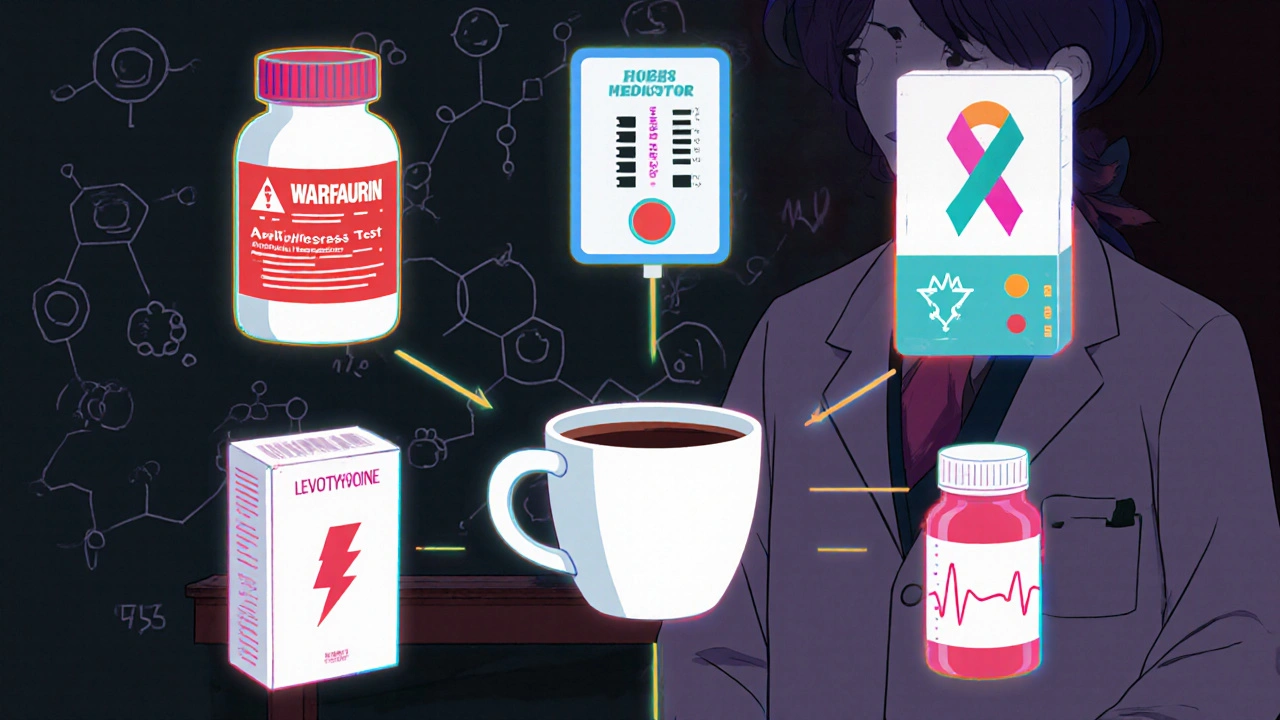
Deep‑dive into the biggest culprits
Warfarin and newer anticoagulants
Because warfarin is largely cleared by CYP1A2, caffeine can push the International Normalized Ratio (INR) up 15‑25 % in as little as 24 hours. A higher INR means a higher bleeding risk. The American Heart Association (2022) advises patients to keep caffeine under 200 mg per day (about two cups of brewed coffee) and to keep intake consistent, so the INR doesn’t swing wildly.
Cardiac drugs that rely on adenosine
Adenosine and dipyridamole work by activating adenosine receptors, triggering coronary vasodilation. Caffeine’s antagonism of those receptors can blunt the effect up to 50 %, making stress‑test results unreliable. That’s why the ACC’s 2023 guidelines demand a 24‑hour caffeine fast before a test.
Antidepressants - the mixed bag
Selective serotonin reuptake inhibitors (SSRIs) such as fluvoxamine see about a 33 % drop in absorption when taken with coffee (Harvard Health, 2024). Tricyclic antidepressants like amitriptyline face the opposite problem: CYP1A2 inhibition raises plasma concentrations by 20‑40 %, heightening anticholinergic side effects.
Anti‑seizure meds
Studies in Epilepsy & Behavior (2019) reported that caffeine raised seizure frequency by 18‑35 % in patients on carbamazepine, phenytoin, or valproate. The mechanistic link is two‑fold: caffeine accelerates drug clearance (lowering therapeutic levels) and also lowers the seizure threshold via adenosine blockade.
Levothyroxine (Synthroid)
A 2017 Endocrine Practice study (n=98) found coffee cut levothyroxine absorption by up to 57 %. The simple fix? Take the pill on an empty stomach, wait 30‑60 minutes before sipping coffee, and avoid dairy or calcium within the same window.
Stimulants & ADHD meds
Mixing caffeine with amphetamine‑based drugs spikes heart rate by 20‑35 bpm and systolic pressure by 15‑25 mmHg within 45 minutes (University Hospitals, 2025). Patients often report insomnia lasting 12 + hours, especially if they take coffee right after their morning dose.
Practical management tips
Knowing the science is half the battle; applying it to daily life is the other half.
- Identify high‑risk meds. Review your prescription list for any drug in the table above.
- Schedule caffeine wisely. Aim for at least a 1‑hour gap before, and a 2‑hour gap after, the medication.
- Track daily caffeine intake. Use a simple log or a smartphone app; 200 mg ≈ 2 cups of drip coffee, 95 mg ≈ 1 espresso.
- Choose low‑caffeine alternatives. Decaf still contains 2‑15 mg per cup-still relevant for ultra‑sensitive meds like warfarin.
- Educate caregivers. Older adults and patients with polypharmacy benefit from a printed “caffeine timing sheet.”
- Consistent dosing. Sudden spikes in caffeine can cause INR fluctuations; keep intake steady day‑to‑day.
When in doubt, ask your pharmacist to flag caffeine warnings in the electronic health record. Since 2024, 92 % of major health systems in the U.S. have integrated caffeine‑interaction alerts.
Clinical impact & public‑health numbers
The American Heart Association (2022) attributes 2.8 % of adverse drug events in adults over 50 to caffeine‑medication combos-about 1 in 35 emergency visits. With 85 % of Americans sipping caffeine daily and 48.7 % on at least one prescription, roughly 150 million people sit at risk.
Economic analyses estimate $1.2 billion a year in preventable costs, from repeat doctor visits to hospitalizations. Reducing these interactions by even 10 % would save billions and improve quality of life.
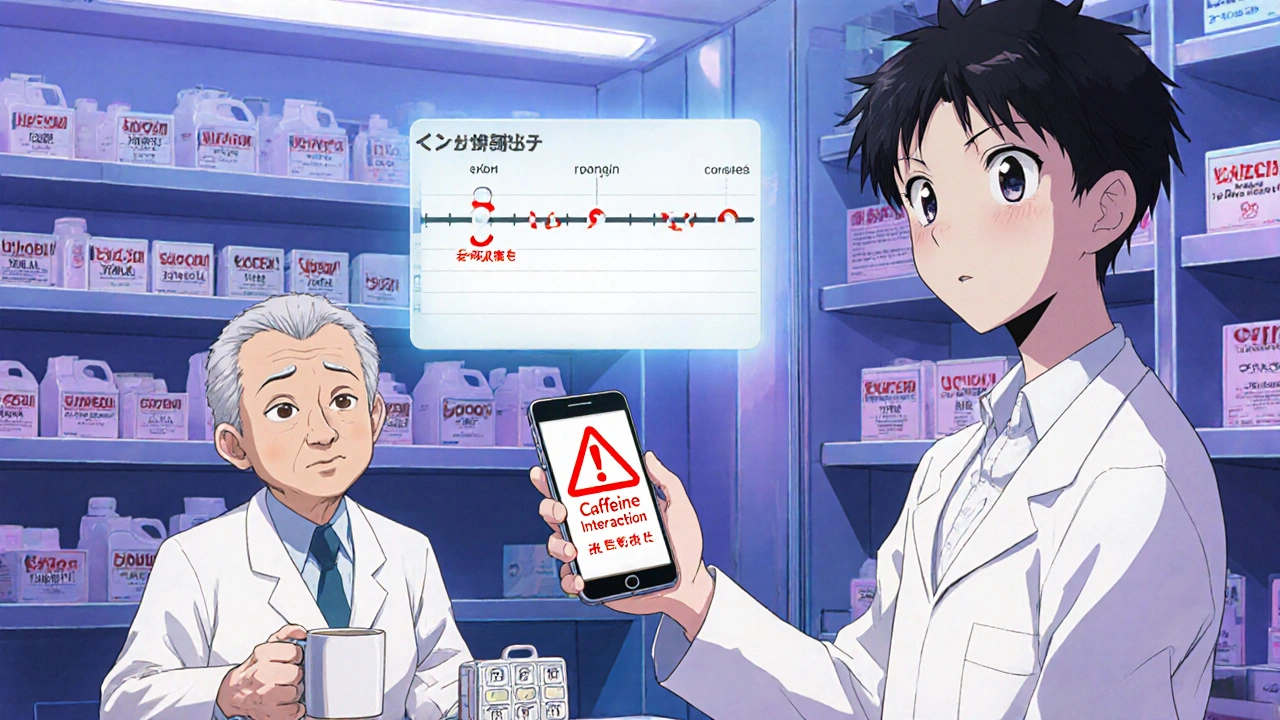
Future directions: where the research is headed
Genetics may soon personalize caffeine advice. CYP1A2 polymorphisms make some people “slow metabolizers,” magnifying drug‑caffeine clashes. The NIH’s $3.2 M 2025 study on apixaban (Eliquis) suggests high caffeine intake (>400 mg/day) can raise drug concentration by 10‑15 %.
Tech solutions are popping up, too. Several pharmacy chains are piloting mobile apps that let you scan a prescription label and instantly see caffeine‑interaction warnings.
Regulators are moving as well-2024 FDA labeling updates now require caffeine interaction warnings on 15 newly identified drug combos.
Bottom line
Whether you’re a coffee lover or just an occasional sipper, caffeine isn’t harmless when you’re on medication. Understanding the enzyme dance, knowing which drug classes are vulnerable, and timing your cup wisely can keep you from turning a routine morning ritual into a medical mishap.
Frequently Asked Questions
Can I drink coffee if I take warfarin?
Yes, but keep caffeine ≤200 mg per day (about two cups) and be consistent. Sudden increases can raise INR and bleeding risk.
Why does caffeine affect thyroid medication?
Coffee changes stomach acidity and binds to levothyroxine, cutting its absorption by up to 57 %. Waiting 30‑60 minutes after the pill lets the hormone enter the bloodstream before caffeine shows up.
Does decaf coffee still matter?
Decaf isn’t caffeine‑free; it usually contains 2‑15 mg per cup. For highly sensitive drugs like warfarin, even that small amount can add up.
How long should I wait after taking a stimulant before having coffee?
Most guidelines suggest a 4‑6 hour caffeine‑free window after amphetamine‑type ADHD meds or pseudoephedrine‑containing cold drugs to avoid heart‑rate spikes.
Are there any tools to check caffeine‑drug interactions?
Yes-many pharmacy software systems now flag caffeine warnings, and several free mobile apps let you input a medication name to see interaction notes.


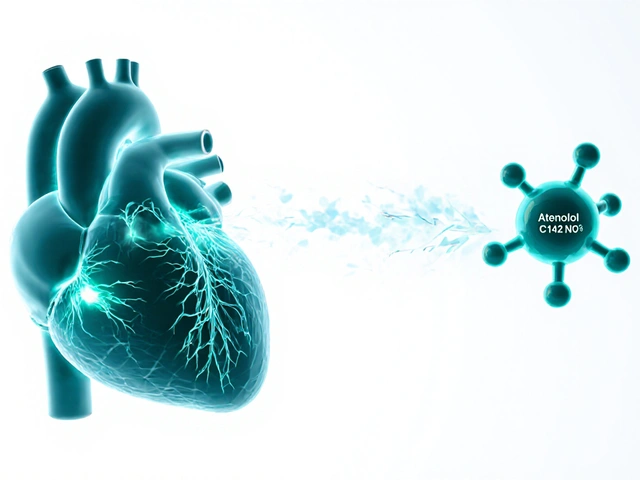
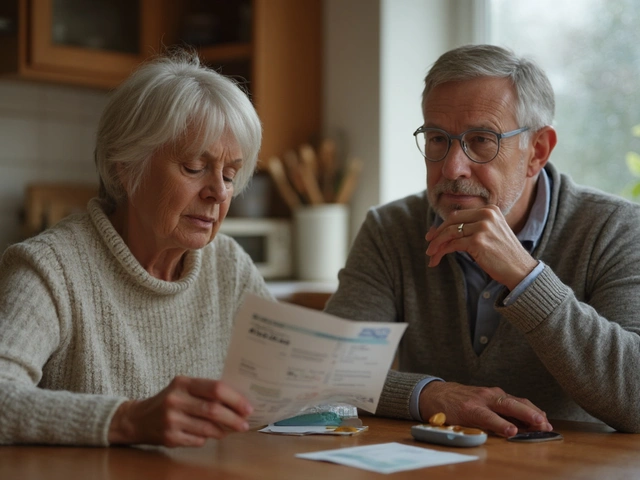
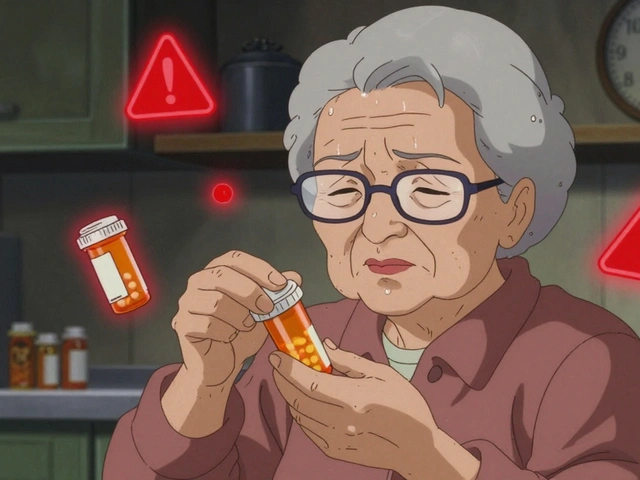

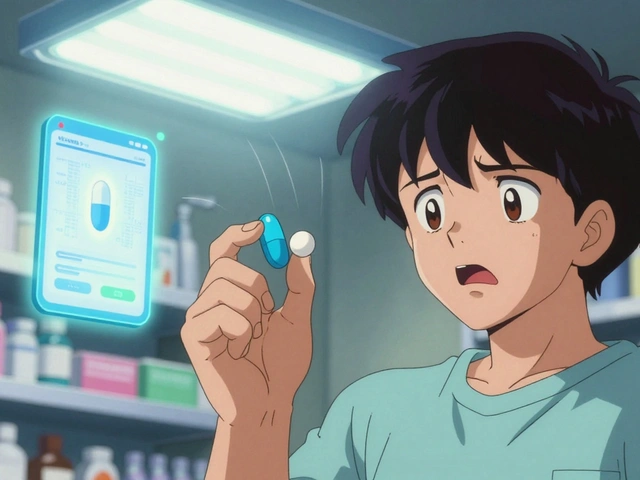
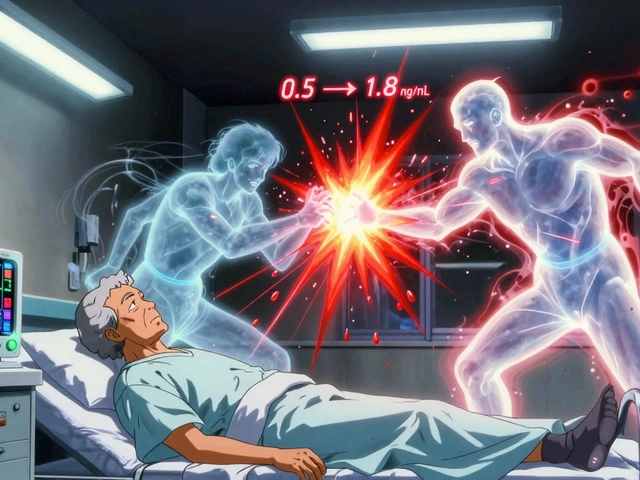

8 Comments
Tammy Watkins
Oct 24 2025It is essential to recognize that caffeine's inhibition of CYP1A2 can significantly alter plasma concentrations of multiple drug classes. By maintaining a consistent daily intake of no more than 200 mg, patients minimize unpredictable fluctuations in INR and seizure thresholds. Scheduling medication at least one hour before, or two hours after, a caffeinated beverage aligns with the majority of guideline recommendations. Moreover, clinicians should counsel patients on the lingering effects of decaffeinated coffee, which still contains residual caffeine. Adopting this disciplined approach safeguards therapeutic efficacy while preserving the enjoyment of a morning brew.
Dawn Bengel
Oct 30 2025Honestly, if you keep popping pills and then slam down a double espresso, you’re practically begging for a medical disaster 😡. The data doesn’t lie-caffeine spikes blood pressure and interferes with anticoagulants, so stop acting like it’s harmless. Wake up, read the label, and respect your doctor’s advice 🙄.
Carla Taylor
Nov 4 2025Hey everyone coffee lovers can still enjoy a cup just watch the timing it’s simple keep the meds and coffee apart by an hour and you’ll stay safe. The body handles the caffeine better when you’re consistent so no sudden spikes. Think of it like dance steps – you lead the drug, then the coffee joins later. Keep sipping and staying healthy!
Michelle Capes
Nov 10 2025I totally understand how confusing all these timing rules can be 😊. It’s easy to forget a cup after you’ve taken your thyroid pill, but a quick 30‑minute wait makes a huge diff. If you’re ever unsure just call your pharmacist – they’re there to help. Stay calm and keep a simple coffee log, it’ll lift the stress.
Jacqueline Galvan
Nov 15 2025The interaction between caffeine and prescription medications is a pharmacokinetic phenomenon that warrants careful consideration in clinical practice. Caffeine acts as a competitive inhibitor of the hepatic enzyme CYP1A2, thereby decelerating the metabolic clearance of agents that are substrates of this pathway. Consequently, patients may experience elevated plasma concentrations of drugs such as warfarin, certain antidepressants, and antiepileptics, which can amplify both therapeutic and adverse effects. In the case of warfarin, a modest increase in caffeine consumption of 100 mg per day has been associated with a 10‑15 % rise in the international normalized ratio, heightening the risk of hemorrhage. For selective serotonin reuptake inhibitors, caffeine may reduce intestinal absorption, leading to subtherapeutic levels and potential relapse of depressive symptoms. Antiepileptic drugs such as carbamazepine and phenytoin are particularly susceptible, as caffeine can lower their serum concentrations and thus lower the seizure threshold. Thyroid hormone replacement therapy is another critical example, where coffee ingestion within 30 minutes of levothyroxine can diminish absorption by up to 57 %. These pharmacodynamic shifts underscore the importance of establishing a standardized temporal separation between caffeine intake and medication administration. Current guidelines commonly advise a minimum interval of one hour before, and two hours after, the ingestion of caffeine‑containing products, although the exact timing may be tailored to individual metabolic profiles. Patients with polymorphisms resulting in reduced CYP1A2 activity should be counseled to limit caffeine to no more than 100 mg per day to avoid excessive drug accumulation. In practical terms, clinicians can employ simple educational tools such as printed timing charts, mobile applications, or electronic health‑record alerts to reinforce adherence. Pharmacists play a pivotal role by reviewing medication lists, highlighting potential caffeine interactions, and recommending consistent daily consumption patterns. It is also advisable to educate patients that decaffeinated beverages are not entirely free of caffeine and may still contribute to clinically relevant interactions in highly sensitive individuals. Ultimately, a collaborative, interdisciplinary approach that integrates patient education, routine monitoring, and personalized counseling will mitigate the risk of adverse events linked to caffeine‑drug interplay. By implementing these evidence‑based strategies, healthcare providers can safeguard therapeutic outcomes while allowing patients to enjoy their preferred caffeinated beverages responsibly.
junior garcia
Nov 21 2025Skip the coffee before your meds or face a storm.
Dason Avery
Nov 26 2025While the fervor is palpable, consider that every substance carries a dual nature-caffeine can invigorate or destabilize, depending on balance. Embracing mindful timing transforms a potential hazard into a harmonious ritual, preserving health without surrendering pleasure. Let wisdom guide the cup, not fear.
Amanda Vallery
Dec 2 2025Actually the guideline recommends a 45‑minute gap, not exactly one hour as stated above – just a small correction.